Normally I don’t exchange saliva with strange men in the bushes, however I was on holiday and this was quite the special occasion. Lava the gardener had been chewing a fist full of roots of the ubiquitous kava plant for the last half hour. Smiling wildly will full hamster cheeks, he regurgitated a mushy fibrous substance on to a vibrant green leaf.
PREFACE: The following article was written prior to the island of Tanna bearing the full brunt of cyclone Pam. Houses, crops and communities were devastated by the category five cyclone, it has caused incredible damage to the Island’s already pretty basic infrastructure and the agricultural based local economy.
It has been a massive and destructive blow for the Island and it’s people.
We wish to express our deepest condolences to the truly wonderful people of Tanna and their special island and we would love to motivate you to donate any money you can afford to the international relief effort.
You can donate to the Red Cross by clicking here
There are also many more great organisations all doing good work on the ground it doesn’t matter who you give your hard earned cash to please just give something if you are able.
Also once the Islanders get back on their feet please go there and spend some much needed tourist dollars you wont regret it…
The ‘processed’ roots of Kava (Piper methysticum) are mildly psychoactive and have been consumed in the ‘nakamals’(meeting places) of the Pacific island of Tanna for hundreds of years and this, Lava earnestly assured me, was the authentic experience.
After straining the brown pulp through the sheath of a coconut frond, true to tradition, an hour before sunset, I was handed a large bowl of brown liquid. Ridding my mind of vivid images of influenza microbes I hesitantly quaffed it down, to be honest the buzz was mediocre, no global euphoria or keys to spiritually locked doors, just a tingling in my peripheral senses as a rather nice feeling of lethargic contentment washed over me.
It gave me a chance to reflect on our time in Tanna, an island the southern reaches of the archipelago nation of Vanuatu. My interest in the islands and Tanna in particular had been sparked shortly after making the life affirming yet fiscally poor decision to follow a career in horticulture. During those heady undergraduate years, deep in the bowels of the college library I found an obscurely titled publication: ‘Agriculture in Vanuatu’ written by a British extension worker called Barry Whiteman. It was an exotic and brilliantly resourceful book, the section that intrigued me the most was on yam cultivation in Tanna- the black and white pictures of ceremonial mounds being prepared deep in the jungle were so exotic and far from the green fields of home, my subconscious and I made a pact to get there.
The one paved road on the island is perched with an air of temporality onto the rocky northwest coast - the island’s only runway is so short it looks like a good place to park a shopping trolly. I’m world weary enough to know that nowhere is as you imagine it to be, but Tanna almost was. The landscape is a pugnacious, riotous festival of photosynthesis where no shade of green is unrepresented; eye wateringly pristine bush tumbles down from the hills to the trade wind ruffled blue of the Pacific.
An almost textbook tropical ecology shrouds every scene; huge banyan trees rush skyward in a fibre optic tangle of wooden pipework like abandoned cathedral organs haunting the bush, spewing out wide canopies of leaf and lignin, shading stout understory species above the ferns and thick litter of the forest floor, the fug of biology is all consuming.
Wide smiling locals sift with little urgency along thin, winding jungle paths- paid work is hard to find on Tanna. This far out subsistence agriculture remains the mainstay of the local economy, and it was those beautifully tended gardens of susutinence that I’d come to see.
A typical garden consists of a patch of cleared land approximately no more than about 20 meters squared and often smaller. Productive trees such as mangos, coconut or bread fruit are left standing, and a sophisticated system of intercropping uses every inch of space, with a heavy orientation toward the starchy root crops central to the traditional diet- cassva, sweet potato, taro intercropped with ground nuts, kava, corn, lettuce, tomatoes, plantain, banana, pumpkins even water melon and taking pride of place of course are the yams.
For those of you whose lives are interesting enough to not know what a Yam is
For those of you whose lives are interesting enough to not know what a Yam (Dioscorea spp) is, it is a large elongated tuberous root vegetable, it has a thick fibrous skin encasing a foamy potato-esque nutritious interior. It is not to be confused with a sweet potato (Ipomea batas) or oca (Oxalis tuberosa) both South American in origin. From this tuber a vine entwines its self up the grower’s simple frame work (often of thin supple branches) it’s heart shaped leaves are easily recognizable for the nine months it takes them to reach a harvestable maturity.
Harvest had commenced a few weeks prior across the island and the new crop was already being planted, hundreds of years of yam cultivation on Tanna has meant that there is a dizzying array of varieties grown.
And for hundreds of years it was the key stone of the local diet although increasing this is being substituted with imported rice and wheat. It is the voluptuous fertility of the velvety black soil that is sifted and massaged into perfect conical yam planting mounds that has given rise to Tanna’s reputation as such a prime horticultural fiefdom, the soil’s fertility is derived from the nutritious settling ash from the still very much active Mount Yassur.
Un-surprisingly it was the explorer’s explorer captain Cook who was one of the first westerners to spot the tectonic glow of Yassur’s eruptions above the jungled skyline. He ordered his ship HMS resolution into an uncannily sheltered and conveniently located bay that he re-named (a little un-imaginatively given the circumstances) Port Resolution. The most fertile land of this fertile island, is the interior of the island known as ‘middle bush’, huge bellowing plumes of nutrient rich smoke wafted by the trade winds drift back to earth dousing everything in a dusty grey film of ash that the tropic rain eventually percolates into the rich bountiful soil.
Cook was denied access to the volcano by the local chiefs as it was considered taboo
We had to go to the source. Cook was denied access to the volcano by the local chiefs as it was considered taboo- fast forward 300 years the taboos had faded and I and my better half were clinging cat-like on all fours to the pyroclastic rim realizing just how thin the line between intrepid and reckless can be.
My head was throbbing with the heat, the black glass sand and ash was compacted, slippery and difficult to find purchase on. The ground seemed unreasonably steep, looking down over the moonscape of the ash plain it was undeniably apparent we where really high up. In the name of frugality we had opted not to take a well trained and knowledgeable guide and it was for that reason I was now trying not look at the football sized lumps of recently molten lava strewn around the trail we were blazing. The hot dark ground juddered and shook with deep terrifying rumbles coming from somewhere powerful and ancient in exactly the direction we where heading.
Relief washed over me as we made it to the rim, almost circular and probably 400m across, it was a surreal scene; a vast curtain of sulphuric clouds and ash swept skyward, above a barren dark ridge line.
Looking intrepid but smelling terrible we made our way around the western side of the rim to where a group of well dressed French tourists where sat eating biscuits smugly.
I’ve always tried to refrain from writing about the ‘joyous’, ‘spiritually enlightening’ ‘OMG’ side of travel
I’ve always tried to refrain from writing about the ‘joyous’, ‘spiritually enlightening’ ‘OMG’ side of travel- but sometimes you experience something that moves you in a way you didn’t realize you could be and your just going to have sound like a like an emotionally unstable prom queen- indulge me if you can.
As night fell, a stiff breeze blew the curtain of smoke and ash and sulphur from the centre of the volcano. As we, this happy band of privileged people looked down into the glowing chasm below the world felt more three dimensional than before. The ground, that reliable solid baseline of my perceptions suddenly felt betrayed, it was like being stood upon the sea. I became vividly aware of the depths below me, of the thousands of meters of rock and stone and energy and heat, of inter planetary substance embroiled in an epic universal struggle of pressure and time, somewhere out here, in space.
And it was from somewhere in those newly realised depths that the combined energy of continent colliding with continent came forth, a shock wave of invisible violence rippled through the sulphuric fog- followed by the thunderous banging echoes of an earth at war with itself, then the pyrotechnic explosion of melted geology flinging itself skyward in a kaleidoscopic rage thirty-forty-fifty meters into the dark of the night. Then the benign pitter patter of cooling lava coming back to earth like a hard rain falling.
We sat there for four hours and I will never be same
We sat there for four hours and I will never be same.
I awoke the morning after the kava with a grogginess and an all over ache after a dreamless sweaty sleep, I was tired and fearful we’d spent nine days Tanna- and it had been great-we’d ridden bare back slowly on stubborn unruly horses, snorkelled rainbow reefs, been met with a hundred smiles, visited the fantastical John Frum cargo cult that held a mysterious WWII US servicemen up as a deity and every where we’d gone the mother nature seemed to be in good spirits.
Tanna isn’t untouched, but so far it hasn’t been corrupted. It was refreshingly ‘un-developed’ and the majority of businesses, natural resources and land remain in the peoples hands, while that may sound horrifically naïve, I’ve spoken to too many people in across world who have seen their land, liberty and independence laid waste to by the cheap and alluring promises of development and jobs that never materialised.
When I asked lifetime regular visitor to the island how the island had remained so free from the spoils of the modern age, she recounted story of a chief in a village that was dirt poor, he had been offered what was reported to be thousands if not millions of dollars to sell vast swathes of his ancestral land by a group of Chinese investors.
His village rejected the offer despite considerable pressure from the local authorities, when asked why he hadn’t sold it his reply was blunt ‘you would not sell your mother, why should we?’ How long that sentiment can last will remain to be seen- one thing is for sure-at least for now Tanna remains refreshingly uncorrupted and un-littered by the age – long live the rustic charms and sunshine people of this little green gem sparkling out there somewhere very big and very blue.
Words and images by Dan Kerins



























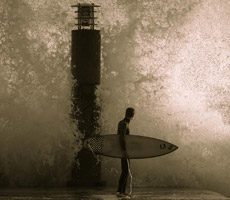
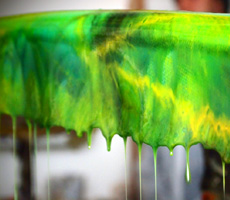
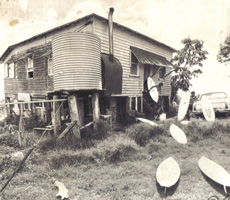
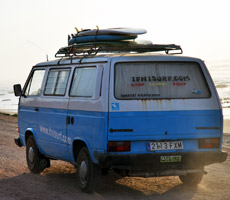

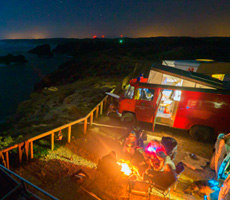

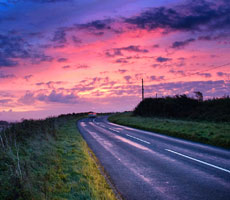
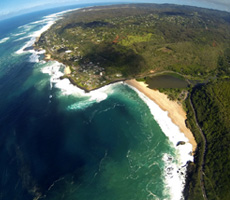
1 Comment
Nice read Dan how’s things hope all is well hope to see u soon!!!!